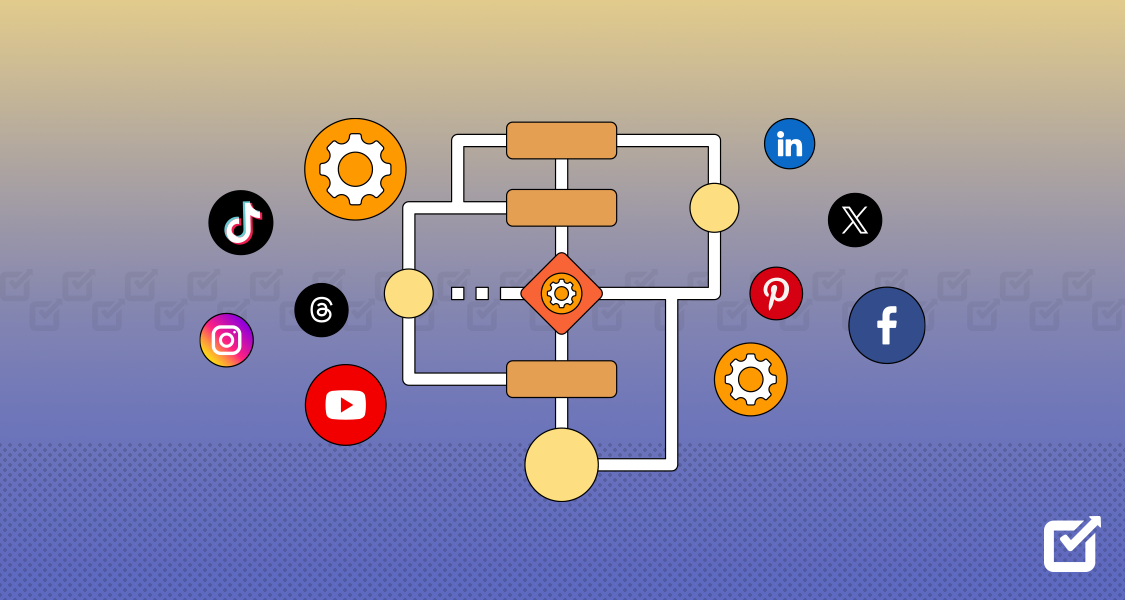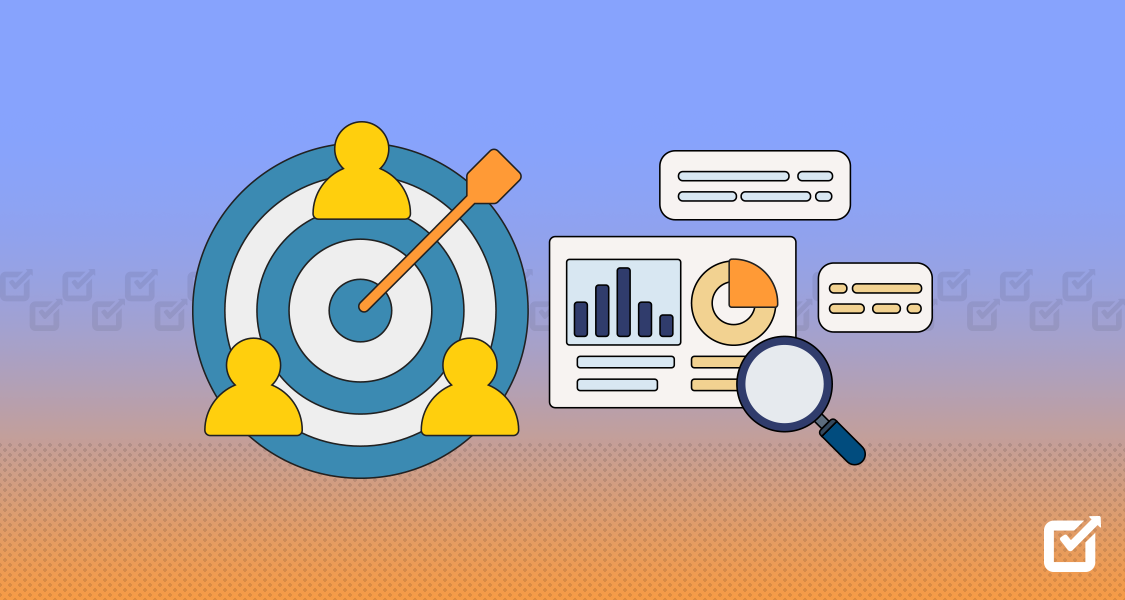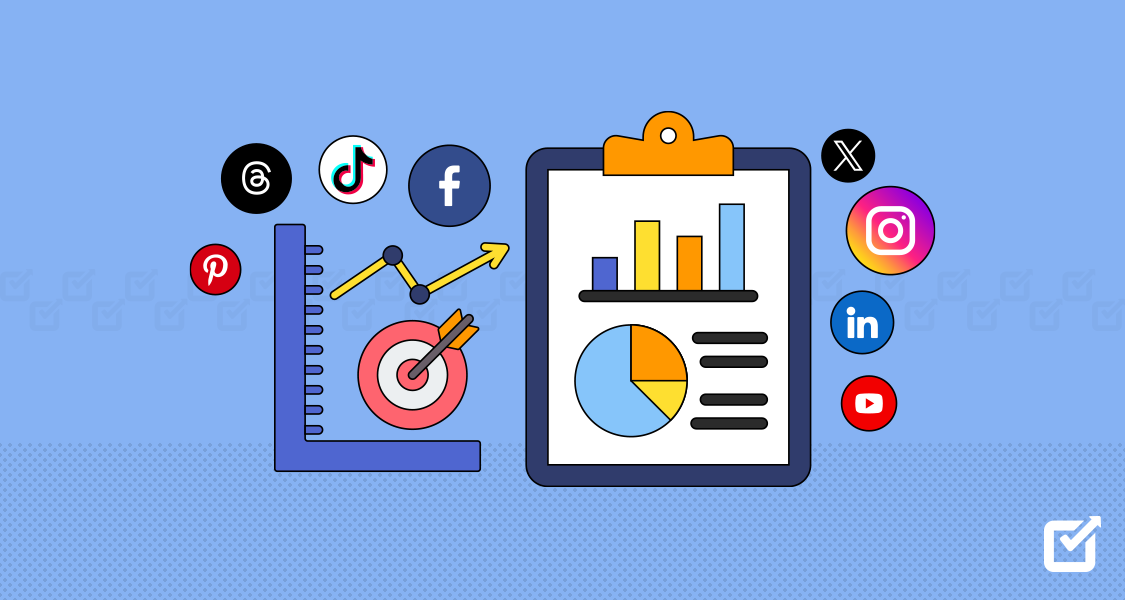Social media is where your brand can either shine or fade into the background.
With so many voices out there, how do you make sure yours stands out?
The answer is simple: have a clear plan.
And that’s where a Social Media SWOT Analysis comes in.
A SWOT analysis shows you your strengths, your weaknesses, what are the threats, and where the opportunities are hiding.
It’s not about guessing—it’s about using real insights to guide your next move.
Whether you’re running a small business or managing a big brand, knowing how to run a SWOT analysis is the key to staying ahead in 2025.
In this guide, we’ll break down why it’s so important, how to actually run one, and the SMM tools that’ll make your life easier.
Ready to take your strategy to the next level?
Let’s dive in!
Short Summary
- Social media SWOT analysis helps evaluate your digital strategy by analyzing strengths, weaknesses, opportunities, and threats.
- Identifying social media strengths like engagement and reach boosts your brand’s visibility and effectiveness.
- Weaknesses such as low engagement or missed opportunities can be addressed through targeted improvements.
- Discover opportunities like emerging platforms (TikTok) or content formats (short videos) to expand your reach.
- Recognize external threats such as algorithm changes or competitor actions to adapt your strategy.Regular analysis ensures a relevant and optimized social media presence, improving engagement and ROI.
- Tools like Social Champ, Sprout Social, and Hootsuite can help gather data and insights for your analysis.
- Conduct your SWOT analysis quarterly or before major campaigns to stay ahead in the competitive digital landscape.
Benefits of Running a Social Media SWOT Analysis
A SWOT analysis of social media isn’t just a theoretical exercise—it’s a practical strategy for success.
Here are some compelling reasons why you should incorporate it into your digital marketing efforts:
-
Understand Your Social Media Strengths
One of the most powerful aspects of a SWOT analysis for social media marketing is that it helps you clearly identify what you’re already doing well. By understanding your social media strengths, you can double down on what’s working.
For example:
- Is your brand seeing a high level of engagement on Instagram?
- Do your followers love your live videos or product demos?
- Are you getting consistent interaction on Facebook or LinkedIn?
By reviewing performance metrics such as engagement rate, comments, shares, likes, and followers, you can identify patterns and trends that show your social media strengths.
Strengths often include things like:
- Strong engagement with followers
- High brand visibility
- Consistent follower growth
- Effective use of hashtags or trends
- Collaborations with influencers
These insights allow you to focus on what’s working and replicate successful strategies across all platforms.
-
Pinpoint Weaknesses in Your Strategy
A social media SWOT analysis also gives you the opportunity to find out where your strategy is falling short.
Understanding your weaknesses allows you to correct course before these issues become larger problems.
Weaknesses could manifest as:
- Low engagement rates on certain posts or platforms
- Inconsistent posting schedules
- Failure to adapt to new trends
- Not capitalizing on user-generated content
- Negative sentiment or criticism from followers
Let’s take an example: Suppose your posts on Twitter aren’t getting as many likes or shares as your content on Instagram.
After reviewing your content, you might find that your Twitter posts are too formal and not engaging enough.
Identifying these weaknesses can help you change your tone or style and revamp your Twitter strategy.
-
Discover New Opportunities
The digital landscape is constantly changing, and a SWOT analysis for social media marketing can help you identify opportunities to grow.
Social media platforms regularly introduce new features, and staying on top of these can give your brand a leg up over the competition.
Opportunities might include:
- Emerging social platforms: New apps and social media networks like TikTok, Snapchat, or even Clubhouse may provide avenues for brand exposure.
- Trending content: A viral hashtag, meme, or challenge might provide an opportunity to tap into the cultural context.
- New content formats: Instagram Reels, TikTok videos, or live streams may be the next big thing to explore.
- Influencer partnerships: Influencers continue to play a pivotal role in driving social media engagement. Collaborating with influencers can amplify your brand’s reach and credibility.
For instance, TikTok’s algorithm prioritizes organic, user-generated content.
If you haven’t yet explored TikTok for your brand, this presents a huge opportunity.
Conducting a SWOT analysis of social media allows you to assess whether you’re leveraging all potential opportunities.
-
Identify External Threats
Social media is dynamic, and there are plenty of external factors that can threaten your success.
A SWOT analysis of social media helps you spot these threats early, allowing you to act fast to mitigate them.
Common threats include:
- Changes in platform algorithms: For example, Facebook’s algorithm shift that prioritizes paid ads over organic posts can impact your content’s visibility.
- Increased competition: More brands are vying for the same audience, which means you need to be more innovative in your approach.
- Cultural shifts: A shift in user behavior, like the growing preference for private social spaces (i.e., Facebook Groups, Discord), could threaten your current content strategy.
- Negative brand perception: Online backlash or viral negative reviews can significantly damage your brand’s reputation if not addressed quickly.
For example, if Instagram’s algorithm changes, limiting organic reach, you may need to revise your strategy to incorporate more paid ads or boost posts to maintain your engagement rates.
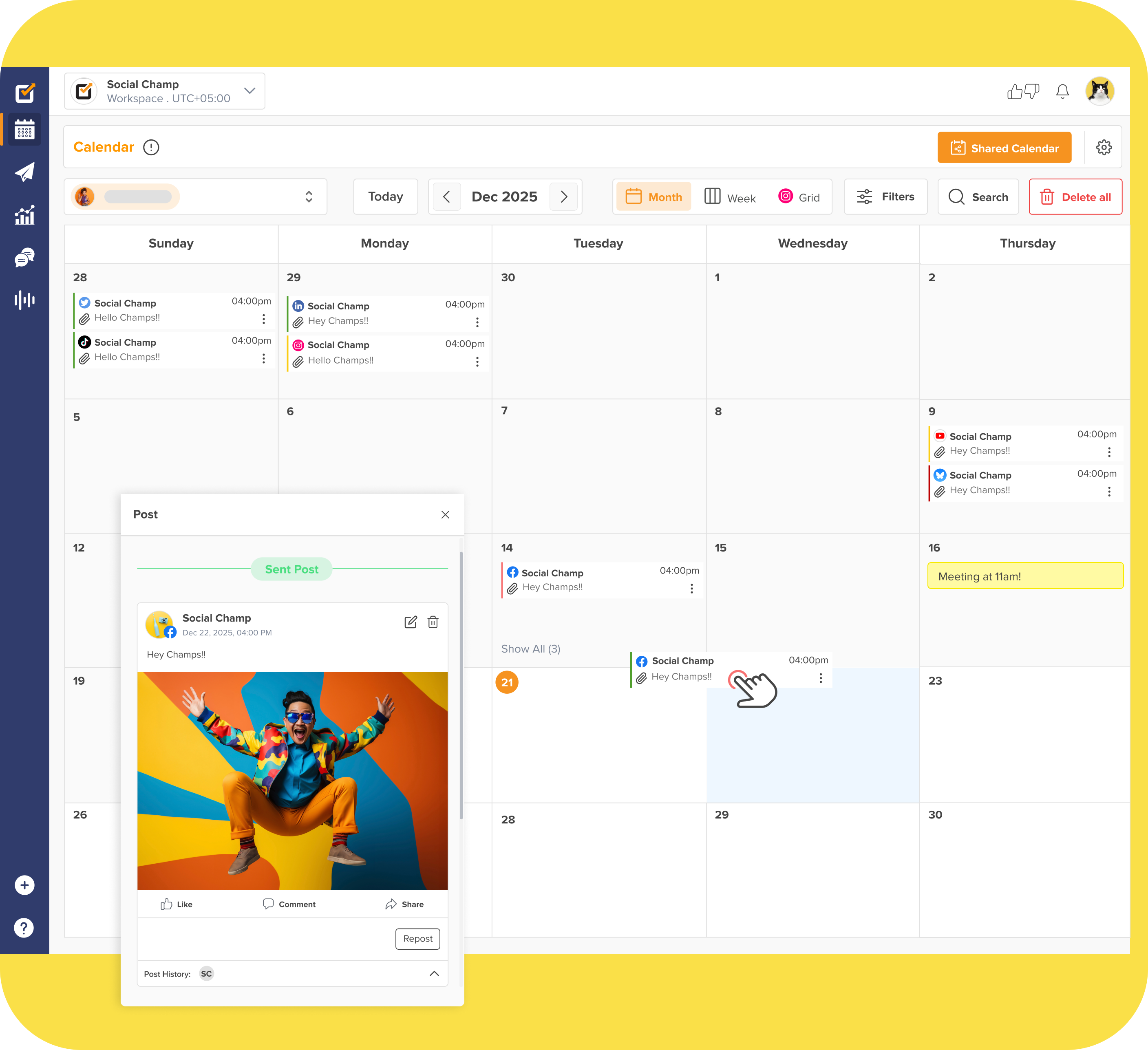
Want to Stay Ahead of Opportunities in Your Social Media Strategy?
Start tracking your SWOT analysis for social media with Social Champ. Get actionable insights to drive your brand’s success!
Featured Article: How to Post Ads on Facebook: A Step-by-Step Guide for Success
How to Conduct a Social Media SWOT Analysis?
Now that you know the benefits of a SWOT analysis of social media, let’s dive into the step-by-step process of conducting one.
The key to an effective social media SWOT analysis is detailed research and data collection.
Here’s a breakdown of the steps:
Step 1: Gather Data from Your Social Media Platforms
Before analyzing strengths, weaknesses, opportunities, and threats, it’s important to gather data from your social media platforms.
Use tools like Google Analytics, Social Champ, or Sprout Social to track performance metrics.
Look at:
- Engagement metrics: Likes, shares, comments, and clicks
- Growth metrics: New followers, account growth, and reach
- Conversion metrics: How many leads or sales are being driven by your social media efforts?
- Audience demographics: Understand who is engaging with your content. Are you reaching your target audience?
This data provides the foundation for your analysis and will help you draw meaningful conclusions about your social media strategy.
Step 2: Analyze Strengths
Review your social media performance and highlight what’s working.
Look for high-performing content, platforms where your brand gets the most engagement, and any successful partnerships or collaborations.
For example:
- If your Facebook page gets more comments than your Twitter feed, it’s a clear strength.
- If your influencer campaign on Instagram led to a noticeable increase in sales, that’s a strength to focus on.
Create a list of all the strengths you observe. Consider factors like:
- Strong engagement with followers
- High conversion rates from social media
- Positive brand sentiment and loyal customers
Step 3: Identify Weaknesses
Look at areas where your social media presence is underperforming.
Weaknesses might include:
- Lack of interaction from followers
- Inconsistent content or posting schedules
- Low click-through rates (CTR)
- Negative feedback from your community
Analyze metrics like post frequency, engagement rate, and content quality.
If your engagement is low, consider adjusting your content or experimenting with new formats.
Step 4: Spot Opportunities
Look for opportunities that could give your brand an edge.
This could be a new platform (like TikTok or a niche community), new content trends (like short-form videos), or an untapped audience.
For example:
- If TikTok videos are getting traction in your industry, this is a prime opportunity to create content and experiment with that format.
- If user-generated content is gaining popularity, you might want to encourage your followers to contribute content and increase engagement.
Step 5: Assess Threats
Identify external factors that could hinder your social media growth.
These could be platform changes, competitor actions, or shifts in audience behavior.
For example:
- Changes in Instagram’s algorithm that limit your organic reach
- A new competitor offering a similar product with an innovative social media strategy
Addressing threats early ensures that you’re prepared for changes in the social media landscape.
When Should You Run a Social Media SWOT Analysis?
A SWOT analysis for social media marketing is not something you do just once.
It’s an ongoing process that helps keep your digital strategy relevant and effective.
Here are the best times to conduct a social media SWOT analysis:
Quarterly or Bi-Annually
Review your social media efforts every three to six months.
This allows you to assess whether your social media strategy is still aligned with your business goals, and if not, what changes need to be made.
Before Major Campaigns or Launches
If you’re planning a major marketing campaign or product launch, conduct a SWOT analysis of social media to make sure you’re on track with the right platforms, content formats, and messaging.
After Changes in Social Media Algorithms
Social media platforms frequently change their algorithms, which can impact your organic reach.
After any algorithm updates (such as those from Instagram, Facebook, or Twitter), assess how it affects your brand’s performance and adapt accordingly.
Tools for Running a Social Media SWOT Analysis
Several tools can help you gather data and insights for your social media SWOT analysis.
Some of the best tools include:
-
Social Champ
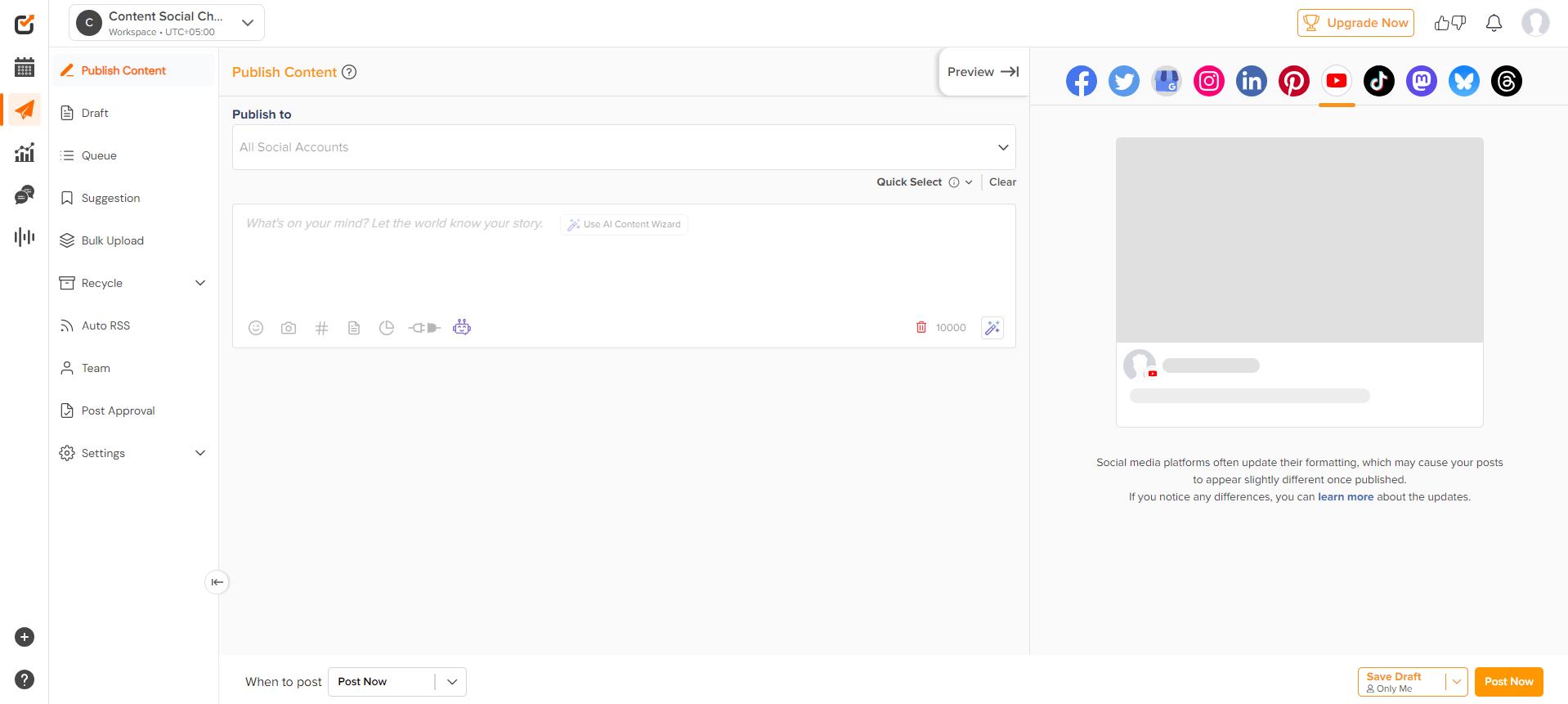
Social Champ Dashboard Social Champ is a powerful tool for managing and analyzing social media.It provides detailed performance reports, engagement metrics, and audience insights.
With Social Champ, you can easily track the success of your posts, identify areas of improvement, and measure the ROI of your campaigns.
Key Features
Following are some key features that you’ll love:
- Social Media Analytics: Track key metrics with detailed analytics, giving you a clear view of your content performance and actionable audience insights.
- Social Inbox for Engagement: Manage and respond to comments and messages across all your platforms from one unified inbox, ensuring no interaction goes unnoticed.
- Team Collaboration and Workspaces: Collaborate seamlessly with your team using user permissions and shared workspaces. This streamlines project management and content approval.
- Competitor Analysis: Keep an eye on the competition with tools that monitor their performance and engagement strategies, helping you stay one step ahead.
- Boost Post: Amplify your reach by boosting your posts directly from Social Champ on Facebook and Instagram, putting your top content in front of a larger audience.
- Social Listening: Track relevant conversations, keywords, and mentions across social platforms, helping you stay tuned into what your audience and industry are talking about.
- Content Scheduling and Publishing: Schedule posts for all major platforms, including Facebook, Instagram, X/Twitter, LinkedIn, and Pinterest, with customizable posting times and automated content recycling to keep your feeds fresh.

Why Juggle Platforms When Social Champ Does It All?
Simplify your social media management with Social Champ! Schedule, analyze, and engage—all from one powerful, easy-to-use tool.
-
Sprout Social
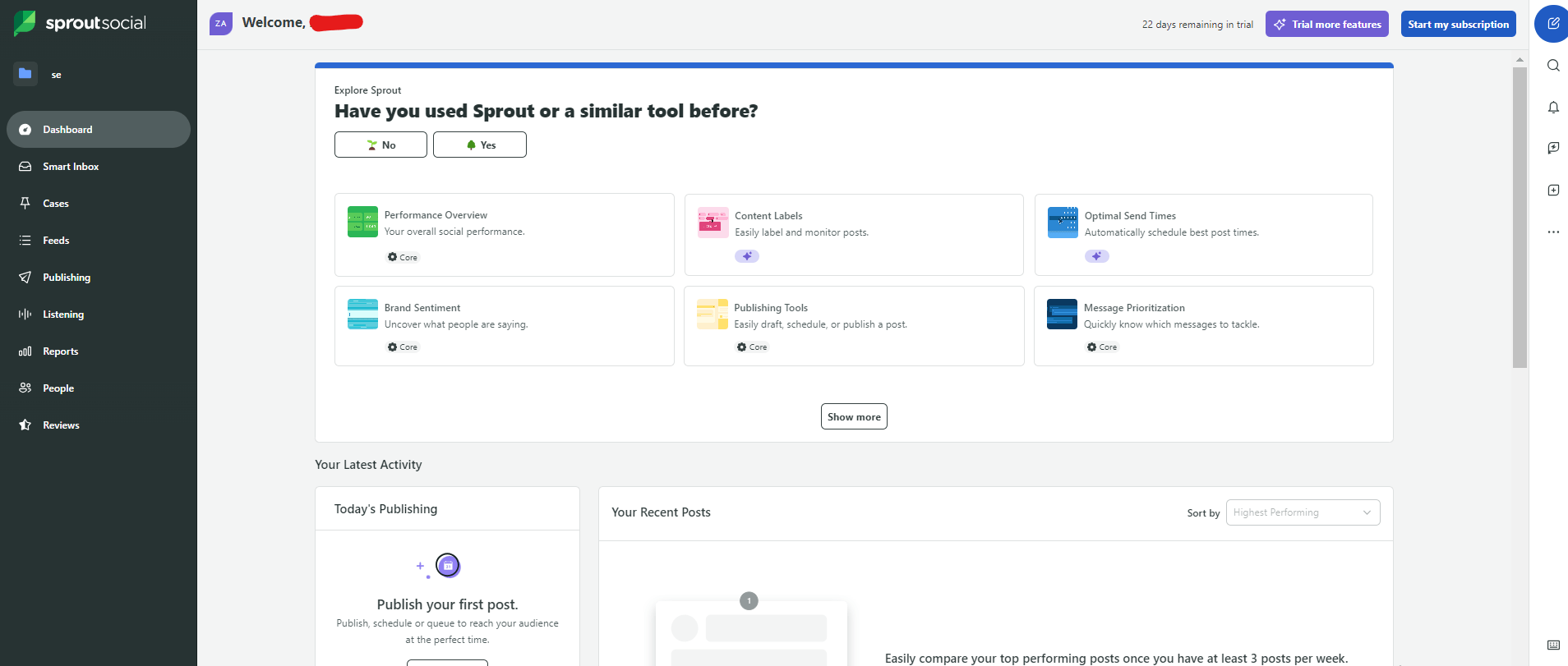
Sprout Social Dashboard Sprout Social is another excellent tool for conducting social media SWOT analysis.
It offers detailed analytics, content scheduling, and reporting features that can help you track your performance across various platforms.
Key Features
- Analytics and Reporting: Offers a wide range of analytics for tracking audience engagement, post performance, and overall social growth, though these reports may feel data-heavy for those not needing advanced metrics.
- Social Inbox: Manage all your social interactions in one place to respond to comments and messages. Sprout Social’s inbox is powerful, though it lacks the intuitive layout of Social Champ’s unified inbox.
- Team Collaboration Tools: These tools allow multiple team members to work on social content with varying levels of permissions, though they may lack the simplicity of Social Champ’s streamlined workspace setup.
-
Hootsuite
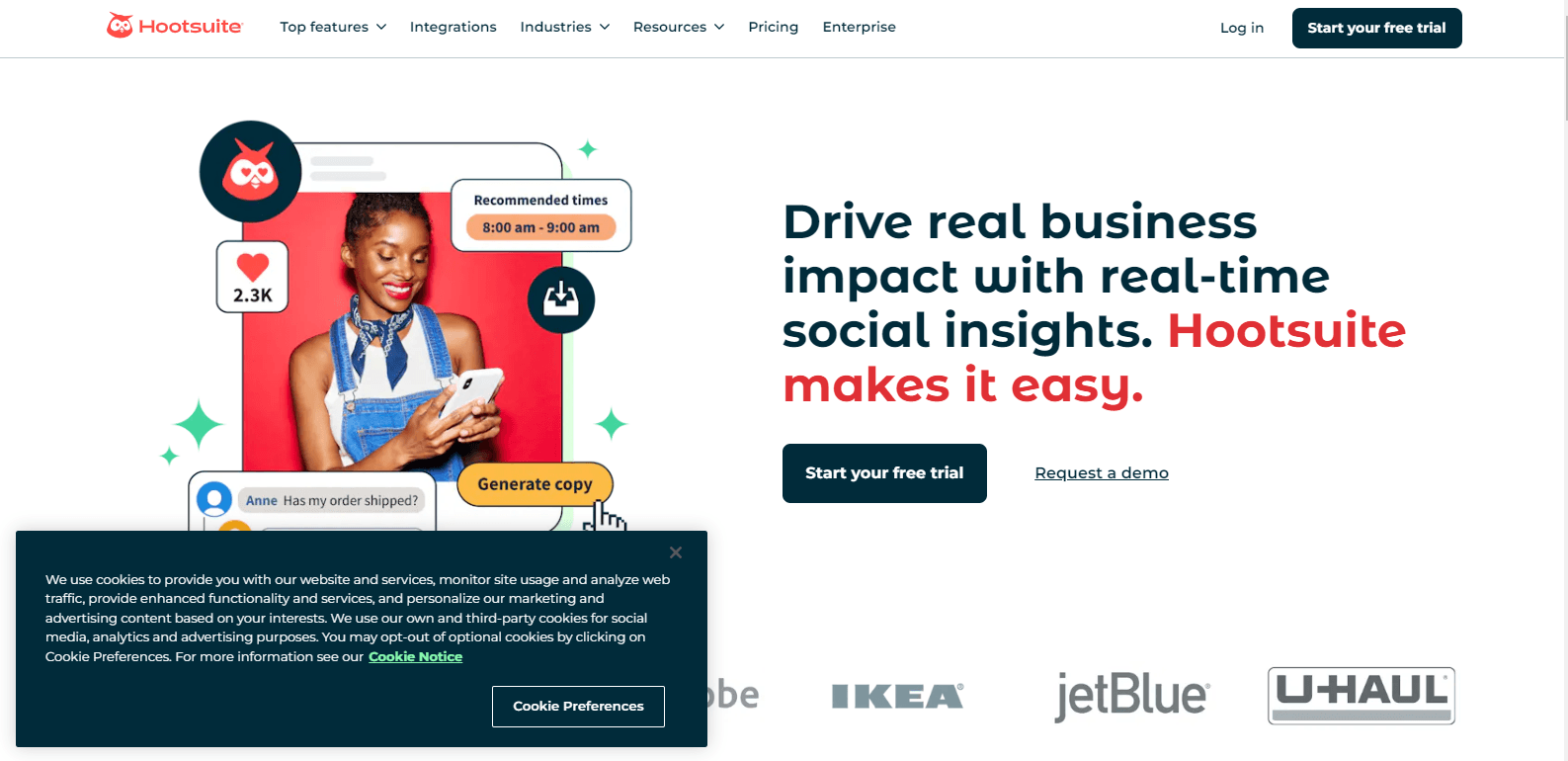
Hootsuite Homepage Hootsuite provides a comprehensive suite of tools for managing and analyzing social media accounts.
It offers analytics for engagement, reach, and growth, and helps you spot trends to make informed decisions.
Key Features
- Social Listening: Hootsuite enables monitoring of brand mentions and relevant conversations across social media, helping businesses stay informed about their online reputation. However, advanced social listening features may require additional costs.
- Team Collaboration: The platform supports team collaboration with features like task assignments and approval workflows. Despite this, some users find the collaboration tools less streamlined compared to alternatives.
- App Integrations: Hootsuite integrates with a wide array of third-party applications, enhancing its functionality. However, accessing certain integrations may involve additional fees.
Conclusion
Conducting a social media SWOT analysis is a critical step in optimizing your digital marketing strategy.
By evaluating your strengths, weaknesses, opportunities, and threats, you can make data-driven decisions that will boost your social media efforts in 2025.
With the right tools and a consistent approach, you can adapt to the ever-changing social media landscape and stay ahead of your competition.
Remember, a SWOT analysis for social media is not a one-time task—it’s an ongoing process that will help you maintain a strong and relevant online presence.
Whether you’re focusing on engagement, content strategy, or growing your audience, a well-conducted social media SWOT analysis is key to long-term success.







